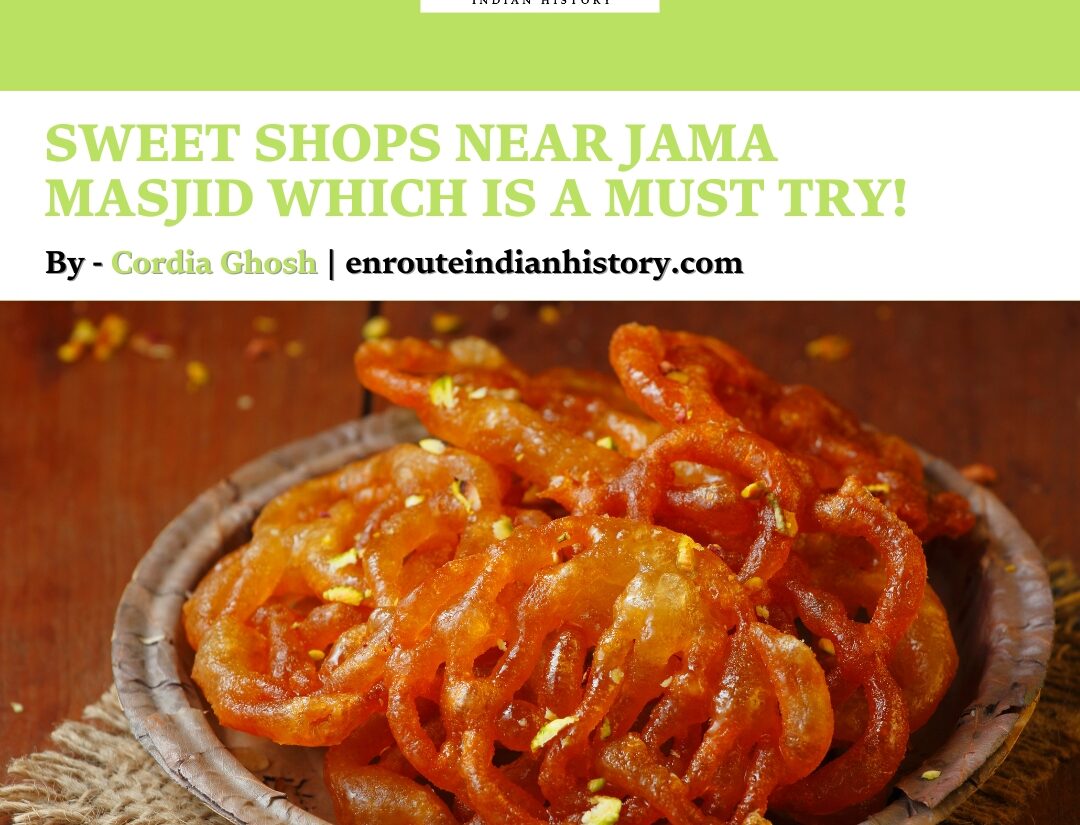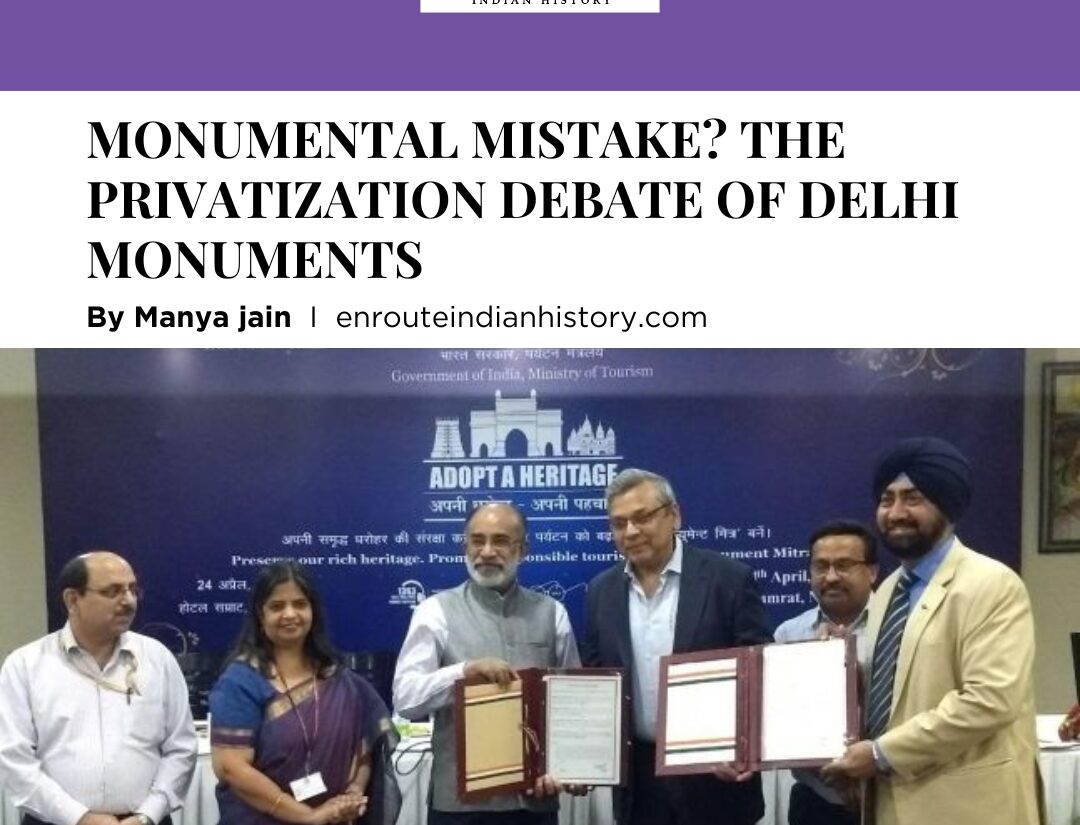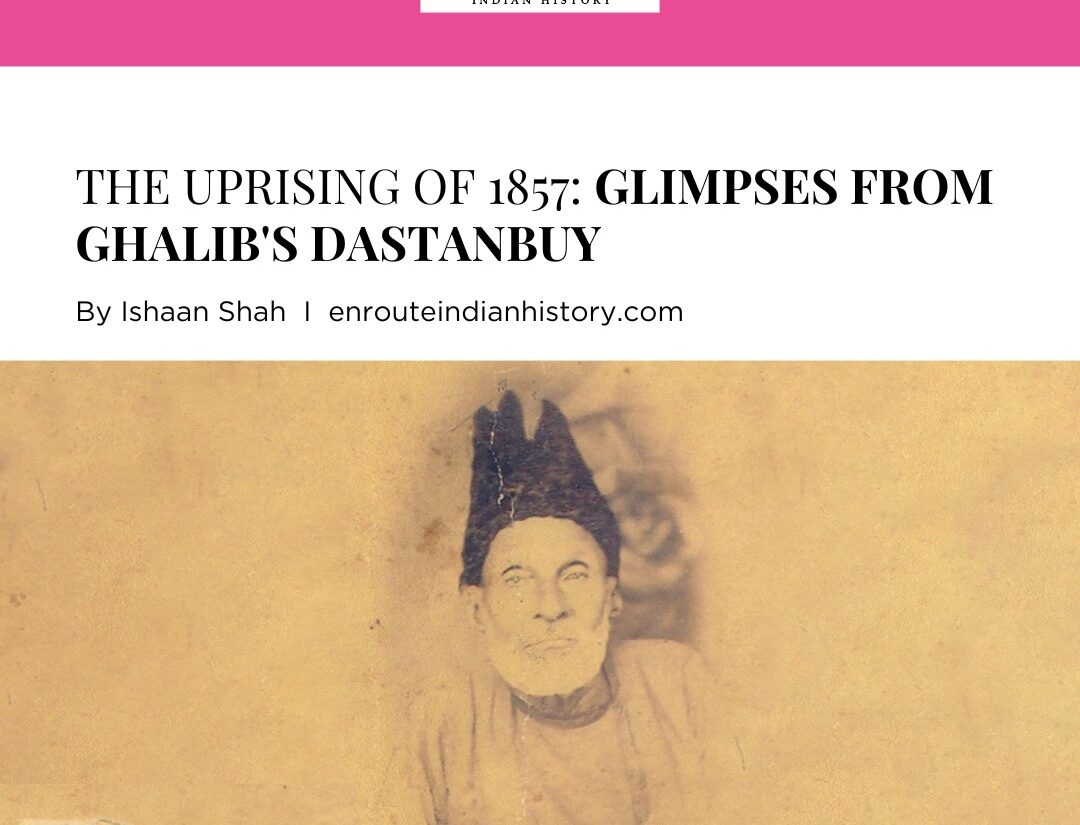
Delhi boasts a remarkable architectural heritage, predominantly characterized by Indo-Muslim and Colonial influences. However, overshadowed by these significant architectural wonders, lie several temples for the Hindu pilgrims. One such category of Temples in Delhi sets itself apart by leveraging the recollection of another time and place to authenticate its existence. The Malai Mandir Temple in Delhi belongs to this category.
Located along the arterial road connecting Vasant Vihar and the neighboring RK Puram, the Uttara Swami Malai Mandir temple’s once magnificent setting now finds itself somewhat obscured by a maze of flyovers that swiftly carry you past it. The Tamil-speaking, Malyali-speaking, and Telugu-speaking communities are lesser in number in Delhi. They started appearing in the city in the second half of the 20th century as did the temple. Among them are a significant number of government employees and educated professionals, particularly those working in the medical sector. Religious practice holds significant sway in fostering ethnic consolidation among minority communities. Malai Mandir Temple is among the focal points of religious activity for the southern diaspora — uniting Tamil, Malayali, and Telugu communities. It serves as a place to meet and strengthen these communities’ social ties.
Located on a hill as its name suggests in Tamil (‘Malai’ in Tamil refers to a mountain or a hill), the construction of the Malai Mandir Temple started in 1965 and was completed in 1973. The Temple is dedicated to Lord Swaminatha Swami, meaning “the Teacher of Shiva”. This alternative name was given to Lord Murugan, the son of Lord Shiva. According to a legend, Lord Brahma disrespected Lord Murugan during a visit to Mount Kailash, leading to a confrontation. Murugan questioned Brahma’s knowledge of creation, specifically the meaning of the sacred Pranav Mantra “Om.” Brahma, unable to answer, was punished by Murugan. Concerned celestial deities approached Lord Shiva, who intervened and asked Muruga to release Brahma. This was when Lord Murugan enlightened him to the meaning of Om, thus earning him the title of Swaminatha Swami. It is located on a hilltop as per tradition with all temples dedicated to Lord Murugan.
ARCHITECTURE OF THE TEMPLE COMPLEX

(Adil Ahmad, Indian Heritage – The Gopuram at the Malai Mandir Temple)
The architecture of the Malai Mandir Temple represents a harmonious fusion of South Indian Architecture creating a unique and captivating religious space. It honors the rich cultural heritage of South India while also adapting to the urban context of the bustling capital city. It is reminiscent of the Dravidian architecture in Delhi. Its striking entrance tower, or Gopuram, is at the forefront of the Malai Mandir’s architectural composition, adorned with intricate carvings and vibrant colors. Gopurams are the towering pyramidal entrance gateways to temples in South Indian architecture. An integral part of the Dravidian temple architecture, Gopurams are typically designed with sculptures of gods and goddesses that depict the myths residing in their lives. In ancient Hindu texts, the architectural layout of a temple, known as Devalaya Vastu, is depicted in anatomical parallels, likening it to the body of the Purusha, or cosmic man. Each structure within the temple complex symbolizes specific anatomical parts: the Garbagriha, or sanctum sanctorum, represents the head, while the Mandapas leading from it, are likened to the neck and chest. The central flag-staff denotes the body’s center, and the gopuram symbolizes the feet. Thus, as worshippers pass beneath the gopuram upon entering the temple, they metaphorically connect and respect the cosmic being by touching its feet.
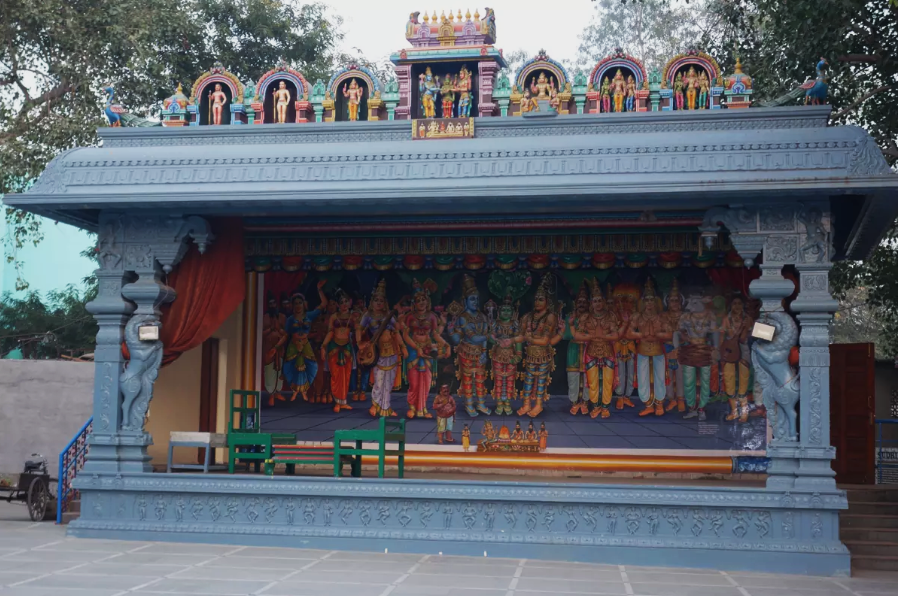
(Adil Ahmad, Indian Heritage – The painted Kalyana Mandapam or wedding hall at the Malai Mandir Temple)
Upon entering a large square courtyard paved with stone, two sides are occupied by intricately carved temples dedicated to other deities, while a Kalyana Mandapam occupies another. Stone stairs ascend to the main temple atop the hill on the fourth side. The painted Kalyan Mandapam is an elevated, rectangular platform adorned with two intricately designed pillars that serve as the site for ceremonies symbolizing the marriage between the temple’s deity and their consort or for conducting religious discourses. Along the staircase are several smaller shrines worshipped at the Malai Mandir Temple.
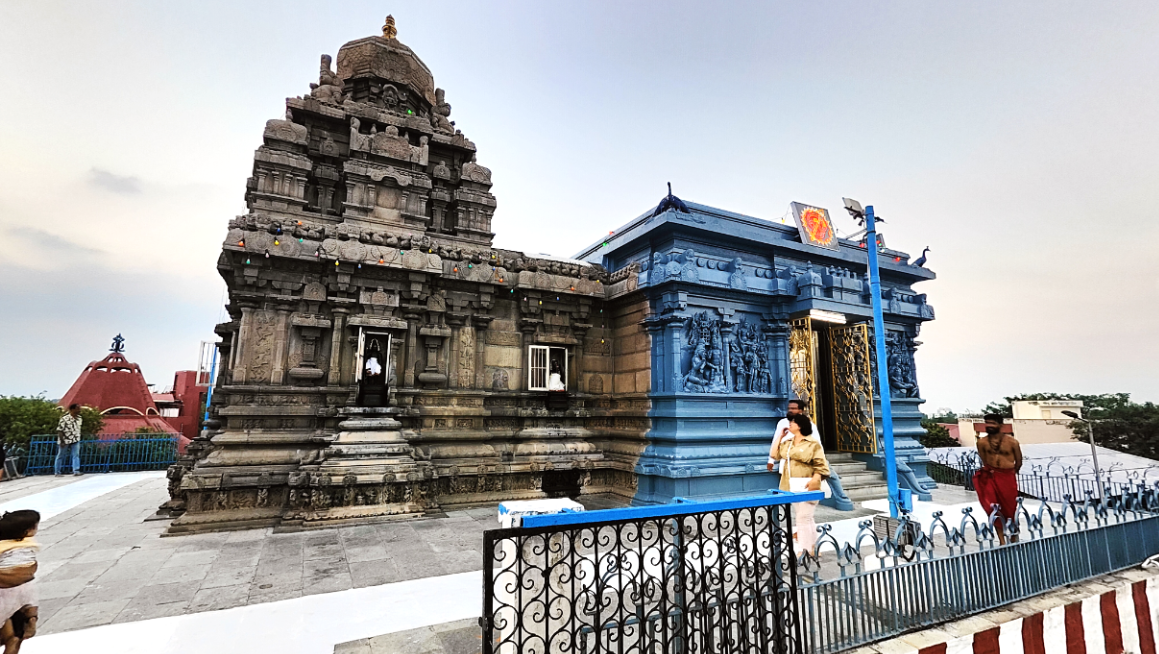
(Mappls.com – The Temple atop the hill housing Lord Swaminatha)
The central focus of the Malai Mandir Temple is the sanctum sanctorum, or the Garbhagriha, housing the magnificent idol of Lord Swaminatha, radiating divine splendor. Devotees gather here to offer prayers, engage in rituals, and request blessings for prosperity, tranquility, and spiritual enrichment. It is constructed from solid granite with a motto of Lord Swaminatha outside the main temple, proclaiming “Yaamirukka Bayamain” translating to “Why fear when I am there.” The Garbhagriha, literally ‘womb-house’, is the sanctum sanctorum housing the main idol which is the focus of ritual attention. Atop the Garbhagriha sits a tower-like structure known as the Shikhara, alternatively referred to as the Vimana. The architectural design encompasses an ambulatory pathway for parikrama, a mandapa, and occasionally, ancillary spaces such as a porch. Mandapa is a colonnaded hall, that serves as a spacious area accommodating numerous worshippers, at the entrance of the temple.
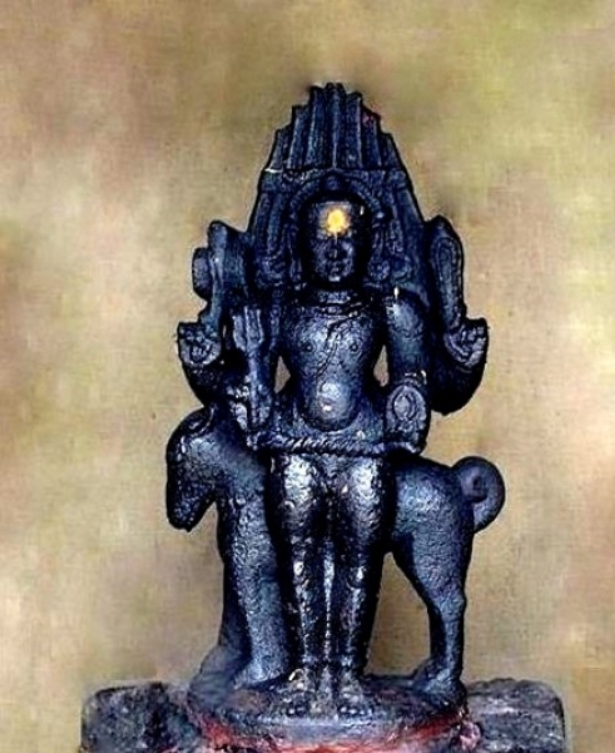
(malaimandir.org.in – Sree Bhairavar/Sree Idumban Sannadhi)
Apart from the Main Temple dedicated to Lord Swaminatha, there are also multiple temples within the complex dedicated to other deities. The consecration of the temples dedicated to Sree Karpaga Vinayakar, Sree Sundareswarar, and Devi Meenakshi, along with the Maha Kumbhabhishekam ceremony, took place on June 13, 1990. The Navagraha Sannidhi and a Sannidhi of Idumban were consecrated on the 7th of July, 1995. The Navagrahas, representing the nine planets, influence our lives and destinies. It is believed that appeasing these powerful Grahas is crucial, and circumambulating the Navagraha Sannidhi nine times is considered customary. Idumban, an asur who was a devotee of Lord Murugan, is considered the guardian of his temples by the devotees. Another addition to the temple complex was made in 1997 with the inauguration of the Sree Adi Sankara Hall.
THE TEMPLE IN RECENT TIMES: CULTURAL HERITAGE
Beyond its religious significance, the Malai Mandir Temple serves as a vibrant nexus of cultural vitality and community involvement. Throughout the year, the temple becomes a hub of diverse activities, from spirited festivals to enlightening spiritual discourses and enriching cultural events, all celebrating the multifaceted tapestry of South Indian heritage and tradition. 2007 was one such year in the history of the Temple. With unwavering devotion, an Eka Koti Archana was conducted, marking a significant milestone. This sacred ritual involved the recitation of one crore Namavalis of Lord Swaminatha Swami by twelve learned Sivacharyas, resonating in harmonious unison for 120 consecutive days. The purpose extended beyond the participating devotees, aiming to benefit the broader populace, the nation, and humanity as a whole. Devotees fervently believe that the successful culmination of the Eka Koti Archana has elevated the sanctity and reverence of the temple. From the jubilant revelry of Thaipusam to the serene contemplation of Mahashivratri, each occasion fosters a deep sense of fellowship and unity among devotees hailing from varied walks of life.
In the heart of Delhi, the Malai Mandir Temple stands as a beacon of spiritual solace and cultural richness. Beyond its architectural splendor and religious rituals, it embodies the enduring spirit of community cohesion and unity. As the sun sets over the temple’s towering spires, casting a golden glow upon its ancient walls, it serves as a reminder of the enduring power of faith to transcend physical boundaries and illuminate the human spirit. For the South Indians in Delhi, the Malai Mandir Temple stands as a way of reconnection with their heritage.
REFERENCES
- Uttara Swamimalai Temple – abode of Lord Murugan in New Delhi. [online] Available at: malaimandir.org.in
- Ahmad, A. (n.d.). Malai Mandir On The Hill. [online] Indian Heritage. Available at: https://indiaheritage.in/malai-mandir-on-the-hill/
- Chandrashekhar, M. (2024). The Tranquility of Uttara Swami Malai Mandir of New Delhi – The Cultural Heritage of India. [online] WordPress. Available at: https://cultureandheritage.org/2024/02/exploring-tranquility-uttara-swami-malai-mandir-of-new-delhi.html
- Albert, M.-T., Bernecker, R., Gutierrez Perez, D., Thakur, N. and Nairen, Z. (n.d.). Training Strategies for World Heritage Management. [online]
- Gupta, A. (2023). Malai Mandir Delhi. [online] Medium.
- August 8, 2024
- 8 Min Read
